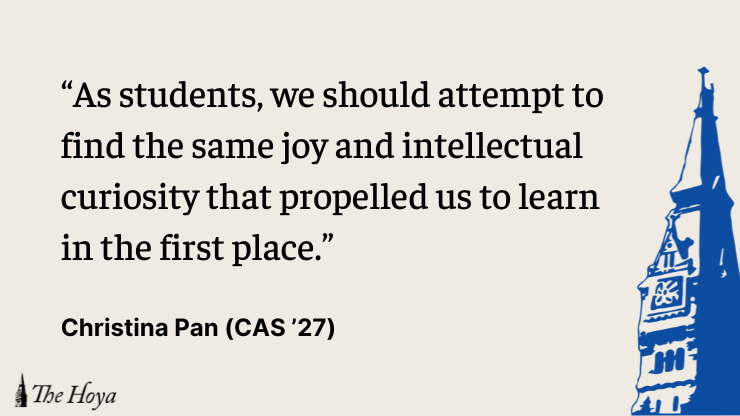Paul Gauguin and Mahatma Gandhi. What do these two figures have in common?
I didn’t know until I fulfilled my second theology requirement. As per the core curriculum, on top of major-specific classes, every Georgetown student must take two courses in philosophy, theology, history and engaging diversity, plus one in humanities, arts, literature or culture and one “Science For All” class.
When registration opens, there’s a fight to get to the “best” professor, or, in other words, the professor with the lowest difficulty rating on RateMyProfessors.
Against the conventional wisdom — that “Problem of God” is generally a better pick — I decided to take “Intro to Biblical Literature” for my first theology requirement, then a course called “Gandhi and Spiritual Nonviolence.”
The first class of “Gandhi and Spiritual Nonviolence” opened with an ethical question regarding whether a figure’s personal life should be taken into consideration when considering their legacy.
Gandhi, beacon of nonviolent resistance or pro-caste racist? Gauguin, the definitive post-impressionist artist or serial pedophile? Richard Wagner, a brilliant composer of romantic symphonies or raging anti-Semite?
After class, as per usual, I tucked the conversation into the back of my mind, where it laid dormant until I visited the Phillips Collection.
The Phillips Collection is one of those serious museums where backpacks are only to be carried under the waist, not to be worn on the back; where every self-declared art connoisseur is attempting to out-stare each other at a piece of art; where the staff will ask you to carry around a green tag proving that you indeed have tickets and did not sneak in.
Even with those formalities, I took my time observing the art, pausing longer at some pieces than others and trying to push through the crowd forming in the Rothko Room and at Van Gogh paintings.
However, one particular painting caught my eye: a relatively simple still-life, centered around a slab of ham on a table, with some chain-like detail against a vivid yellow background.
I was drawn to how utterly un-still this still-life painting was. The ham, flushed scarlet against the almost sickly yellow, sat against the chains in the background. It made me think of Shakespeare’s “Merchant of Venice”: a pound of flesh on a weighing scale of justice, exchanged for the security demanded on a loan.
It was only after I squinted at the plaque that I saw Gauguin’s name inscribed next to the frame. All these thoughts came to me before looking at the artist’s name. Regardless of the person who painted the work, the art itself was undoubtedly nothing short of a masterpiece.
When I saw Gauguin’s name, I thought to myself, “that makes sense,” and suddenly the conversations from my theology class started coming back to me.
The way I understand it, there’s a correlation between flawed people and the ability to create disturbing and thought-provoking work. Now, I don’t think bad character or serious moral flaw is a prerequisite to creating interesting art or having multifaceted ideologies, but there’s definitely a correlation.
After my visit to the Phillips Collection, I started finding other connections from my other core classes in my daily life. I won’t lie and say that none of these core classes are dry or tedious. But sometimes, small occurrences — like applying the inductive logic I learned from my philosophy requirement to remedy my awful common sense, or using the concept of time dilation that I learned while fulfilling my science requirement to justify my tardiness — make me appreciate the education and intellectual exploration that Georgetown allows me to engage with.
The conversation around academics at Georgetown tends to swing on the side of comments about the workload and rigor rather than the actual content itself. We’ve fostered a culture where we don’t see classes as learning opportunities, but rather lists of assignments. While I find minimal joy looking at the list of tests, essays and problem sets I have yet to finish, I try to approach the learning process with a mindset that allows the possibility of something interesting to apply to my personal life.
As students, we should attempt to find the same joy and intellectual curiosity that propelled us to learn in the first place. While I know that I won’t necessarily use any of the knowledge in these core classes for my future career, I am glad to have the opportunity and space to see real-world remnants of philosophy, theology, history and a myriad of other subjects in my own life.
I’ve found that these connections have helped me get through a tedious semester and would encourage you to find them too.
Christina Pan is a first-year student in the College of Arts & Sciences.














